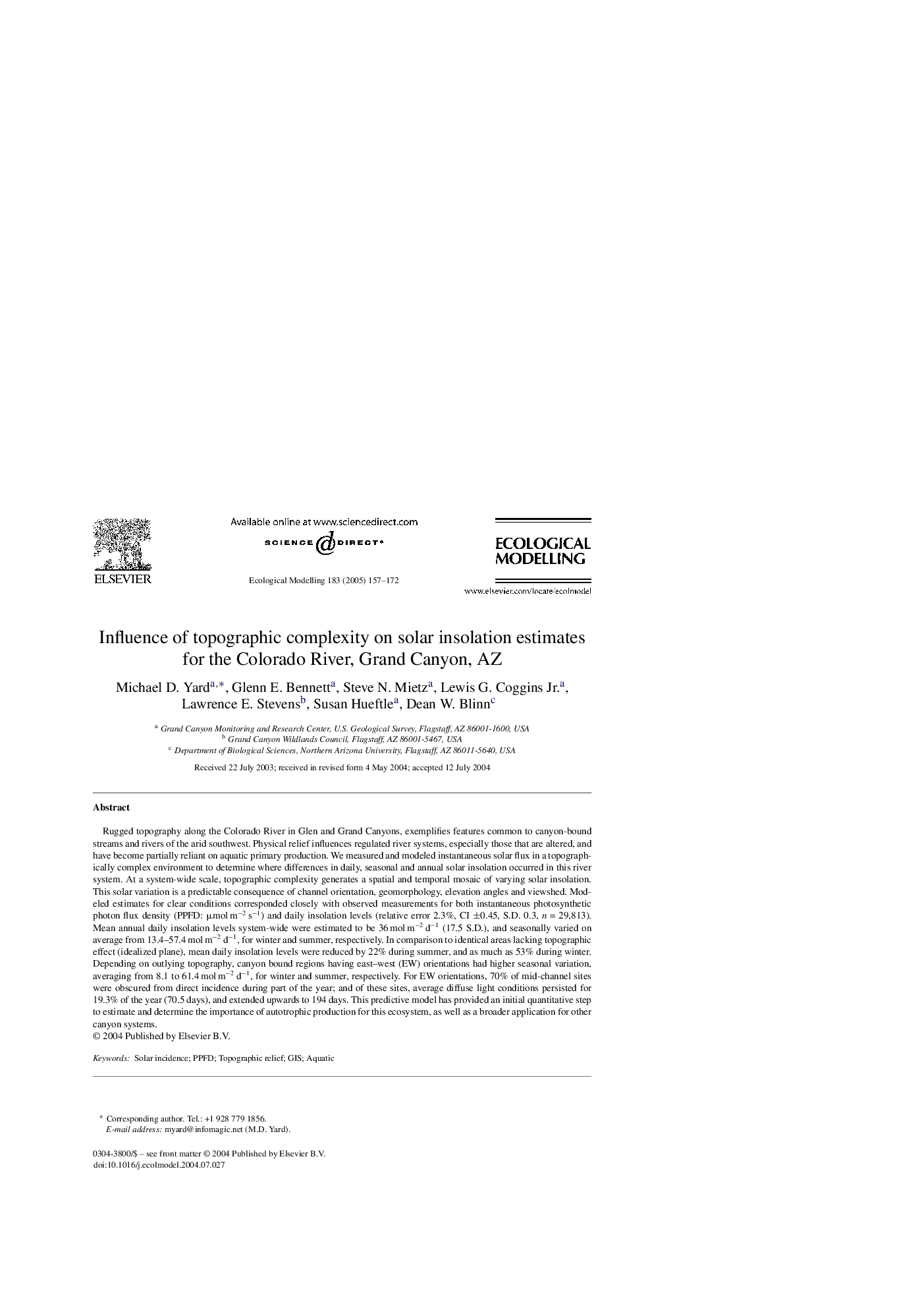| کد مقاله | کد نشریه | سال انتشار | مقاله انگلیسی | نسخه تمام متن |
|---|---|---|---|---|
| 9443539 | 1617579 | 2005 | 16 صفحه PDF | دانلود رایگان |
عنوان انگلیسی مقاله ISI
Influence of topographic complexity on solar insolation estimates for the Colorado River, Grand Canyon, AZ
دانلود مقاله + سفارش ترجمه
دانلود مقاله ISI انگلیسی
رایگان برای ایرانیان
موضوعات مرتبط
علوم زیستی و بیوفناوری
علوم کشاورزی و بیولوژیک
بوم شناسی، تکامل، رفتار و سامانه شناسی
پیش نمایش صفحه اول مقاله

چکیده انگلیسی
Rugged topography along the Colorado River in Glen and Grand Canyons, exemplifies features common to canyon-bound streams and rivers of the arid southwest. Physical relief influences regulated river systems, especially those that are altered, and have become partially reliant on aquatic primary production. We measured and modeled instantaneous solar flux in a topographically complex environment to determine where differences in daily, seasonal and annual solar insolation occurred in this river system. At a system-wide scale, topographic complexity generates a spatial and temporal mosaic of varying solar insolation. This solar variation is a predictable consequence of channel orientation, geomorphology, elevation angles and viewshed. Modeled estimates for clear conditions corresponded closely with observed measurements for both instantaneous photosynthetic photon flux density (PPFD: μmol mâ2 sâ1) and daily insolation levels (relative error 2.3%, CI ±0.45, S.D. 0.3, n = 29,813). Mean annual daily insolation levels system-wide were estimated to be 36 mol mâ2 dâ1 (17.5 S.D.), and seasonally varied on average from 13.4-57.4 mol mâ2 dâ1, for winter and summer, respectively. In comparison to identical areas lacking topographic effect (idealized plane), mean daily insolation levels were reduced by 22% during summer, and as much as 53% during winter. Depending on outlying topography, canyon bound regions having east-west (EW) orientations had higher seasonal variation, averaging from 8.1 to 61.4 mol mâ2 dâ1, for winter and summer, respectively. For EW orientations, 70% of mid-channel sites were obscured from direct incidence during part of the year; and of these sites, average diffuse light conditions persisted for 19.3% of the year (70.5 days), and extended upwards to 194 days. This predictive model has provided an initial quantitative step to estimate and determine the importance of autotrophic production for this ecosystem, as well as a broader application for other canyon systems.
ناشر
Database: Elsevier - ScienceDirect (ساینس دایرکت)
Journal: Ecological Modelling - Volume 183, Issues 2â3, 25 April 2005, Pages 157-172
Journal: Ecological Modelling - Volume 183, Issues 2â3, 25 April 2005, Pages 157-172
نویسندگان
Michael D. Yard, Glenn E. Bennett, Steve N. Mietz, Lewis G. Jr., Lawrence E. Stevens, Susan Hueftle, Dean W. Blinn,